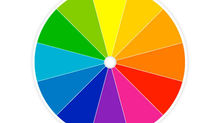The Ancient and Auspicious Swastika
Earlier this year, I went on a search to a small Indian market in Berkeley for some platters for truffles. From a previous trip there, I remembered there were beautiful copper plates and pots. To my surprise on my trip back to the market, I found a copper plate decorated with a Swastika. Seeing the Swastika used for it’s original purpose put a smile on my face. Then, I had a sudden realization that using these platters at the chocolate shop would require a lot of explaining.

The Swastika symbol has been used for thousands of years (in almost all human civilizations) as a sign for good luck, protection, as a materialization of life, and the changing seasons of the year. Especially common in India, the word itself stems from the ancient Indian language of Sanskrit. The term Swastika, or Svastika, as it’s written in Sanskrit, means “all is well,” or alternatively, “being happy.” The root word, svasti (sv = well; asti = is), is another term implying good fortune, luck, and well-being.
Needless to say, the various symbolic meanings listed above are heavily inconsistent with how the Western world perceives the Swastika. The symbol was adopted by the Nazi Party during World War II, as they held the belief that the symbol was Aryan, and signified racial purity and superiority. The appearance of the symbol was altered by Adolf Hitler, in order to suit the needs of the Nazi movement. This resulted in two basic variations of the Swastika image, to which far different values are attached.

The traditional Swastika is a cross with four arms of equal length, with the end of each arm bent at a right angle (clockwise or counterclockwise). It sometimes features four dots, in the spaces between the arms. But the main feature separating the traditional and Nazi variations is that the traditional Swastika rests flat on one side, never on a single point.
The Nazi Swastika also has four arms bent at right angles, but rests on a single point, like a diamond. So, instead of somewhat resembling a cross, the Nazi variation instead forms a central “X” shape. Nazi representations also seem to feature thicker lines, on the whole.

Hitler’s alterations to the Swastika were made painstakingly, or perhaps even obsessively. Many different drafts of the Nazi Flag are chronicled in his manifesto, Mein Kampf.
Despite it’s complicated history within the past century, the Swastika still is considered sacred in a number of traditions. As stated above, Hindu usage of the Swastika is still prevalent and wide-ranging. In addition to being a traditional emblem of good luck and wellness, it can also represent Brahma, the god of creation. Furthermore, the Swastika can represent rebirth, seasonal change, and the cyclical nature of the universe. The very shape of the Swastika elicits thoughts of circular movement and constancy, representing the turning of the earth on its axis, to the planets’ rotation around the sun, and everything in between.

In a Buddhist context , the swastika means resignation, or acceptance. For that reason, the symbol is often present in images of Buddha, on his hands, feet, or chest.
Within the context of Jainism, the swastika’s four arms represent the four possible outcomes of rebirth: to be a demigod, a human, a non-human animal or plant, or, least desirable, a hell-dweller of any variety. Each of the four arms leads to a different outcome, but all outcomes include some form of reincarnation.
The Thai word for ‘Hello’ is S̄wạs̄dī (sa-wat-dee). Click here and then click on the ‘listen icon’ to hear the Thai word for hello, which sounds quite similar to ‘Swastika’ when pronounced aloud. Breaking down the meaning of hello in Thai, ‘sa-wat’ means blessings or good fortune and ‘dee’ means [is] good.
Furthermore, you can see the symbol in art and architecture the world over, and from many different eras. Here are a few examples below:

The swastika is often featured on exteriors of homes and temples in countries like India and Indonesia.

In ancient Greece, a single Swastika was commonly used on pottery.

At the end of my chocolate platter search, I opted not to purchase the swastika platter. Instead I bought an om platter. It’s a safer bet not to offend anyone and an auspicious symbol just the same. Even though the platter I found is one of good luck and well-being, the thought of offending a customer or eliciting negative emotions in what should be a happy experience of buying and eating chocolate, cannot be ignored. A chocolate shop is not a place for a swastika conversation piece, at least not yet. But perhaps this post can foster a bit of healing and education.























